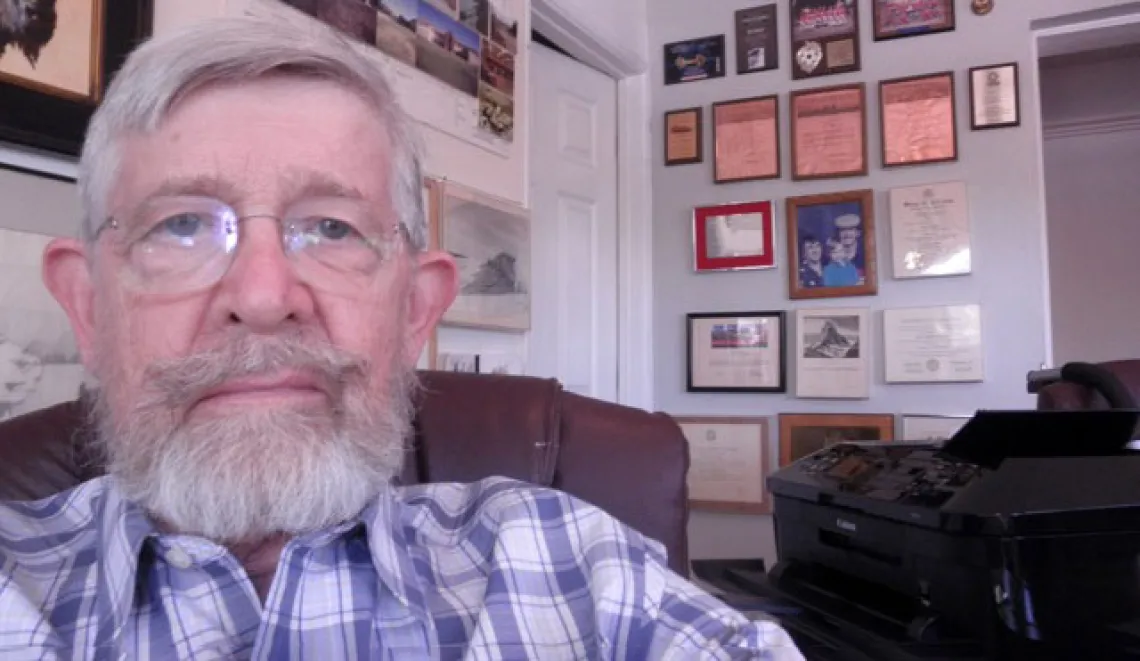How Architecture Can Save a Life: Roy Noggle ’67 B.Arch

“This education in architecture saved my life,” says Roy Noggle, who graduated from the University of Arizona’s Bachelor of Architecture program in 1967.
Noggle grew up in Prescott, Arizona, where his father built houses. Though his father wasn’t a licensed architect, he essentially did design-build, including such projects as the lodge at Camp Lawton Scout Camp atop Mt. Lemmon in the Santa Catalina Mountains north of Tucson.
While still in high school, Noggle developed an interest in his father’s work and began helping his father with construction, as well as sketching houses.
He enrolled at UArizona, where his older brother was already attending the College of Physics. He knew he wanted to study architecture from the beginning, and became a member of the well-known “Safeway Class,” so named because the original architecture studio was held in an old Safeway grocery store on North Park Avenue.
When Noggle earned his B.Arch, he was in the first class to graduate in the new Architecture Building on North Olive Road on main campus.
After graduating, Noggle enlisted in the Army. He was shipped off to boot camp, where engineers soon recognized his valuable skill set and plucked from basic training for Engineer Officer Candidate School, from which he graduated in 1968.
Two weeks before he was due to ship out for Vietnam, two personnel specialists visited him on a job site and asked whether he wanted to be deployed or stay in Germany.
In 1969 Noggle was sent to Germany with the Army Corps of Engineers. While there he was involved with several large projects, collaborating with engineers and other technical professionals. He became a platoon leader in a construction battalion, which he equates to “managing a portion of a 700- to 800-man construction company—a great experience.”
Two weeks before he was due to ship out for Vietnam, two personnel specialists visited him on a job site and asked whether he wanted to be deployed or stay. It seems that Vietnam had already taken too many engineers and ranking officers from the Corps. They needed him to continue leading projects in Germany, and Noggle eagerly agreed.
“You see now?” he says. “My education in an old Safeway store saved my life.”
Noggle served two more years in Germany before leaving the Army in 1972. From there, he backpacked through Switzerland and climbed the Matterhorn before returning to Tucson, where he lived with his brother and their friends.
He recalls riding his bicycle up to the back doors of Architecture One, a Tucson firm, and found fellow Class of 1963 friends Phil Dinsmore, John Riggs and John Kulseth making a go of it. He accepted a job with the firm, where he worked for five years.
In 1975 Noggle married and a year later became a registered architect in Arizona. In 1978 he opened a practice behind Tucson’s midtown Rincon Market with Brian McCarthy ’70 B.Arch: Noggle McCarthy Architects. McCarthy was Noggle’s business partner for 20 years.
In 1998 Noggle left the firm because his wife’s job pulled them to Phoenix.
More than 30 years later, he still runs Roy Noggle Architects, AIA, but spends a lot of his time working on other skills. “My wife and I always said that when we retired we would take up ballroom dancing,” he says. “She died before we could try it, so now I’m doing it for both of us.”
He also loves hiking and spending time with his son, daughter-in-law and granddaughter.
After more than 50 years in the design and construction industry, Noggle offers this advice to students at the College of Architecture, Planning and Landscape Architecture: “Intern with a contractor.” That experience, he says, is particularly valuable for a designer.



